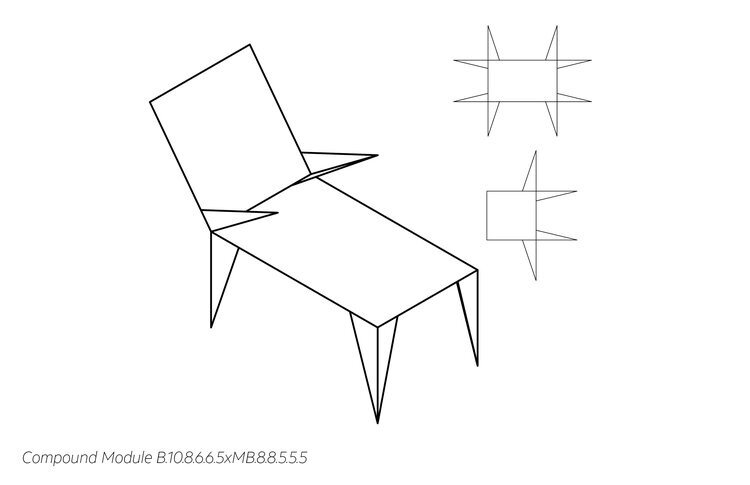Shifuto
Being able to take out a sheet of material, fold it, and assemble furniture without the need for hardware or tools would probably feel just as miraculous as it materializing from the floor to someone living in a studio apartment the size of a suburban living room.
That was the original idea behind Shifuto, but as I went down the rabbit hole, it expanded into an ecosystem of furniture made up of configurable parts.
Parametric Modules
Everything built with the Shifuto system is comprised of one of 2 classes of module defined by the relationship of the base and the leg subunits.
Type A resembles a flower, where triangular “petals” radiate from a central polygon.
The petals in Type B are defined by the shape of a base rectangle, the distance they span from the corners to the center of each side of the rectangle, and the length of the petals.
The entire geometry of both classes of module were defined using a Grasshopper script in Rhino3D.. Since the geometry is defined by specific parameters, it is easy to model different configurations in virtual space.
Combining Modules
Alone, these modules can be used to create furniture that has a very specific form factor, namely tables and scaled tables, but by combining the modules, more complex forms can be created.
A Lounger made up of a modified and unmodified type B units.
A Lamp made by combining type A and type B modules
What needs to happen to bring it to life?
In order to take this system out of the computer, I imagine kits being developed that would consist of 1/4 inch plywood plates cut into the shapes of the subunits and then being joined together with machined aluminum angle joints and bolts. From there the user would take these components and build to their liking. Specialty plates incorporating hardware for things like lighting and power could be added to further expand on the system.
Initial Experimentation
Before developing the solution that was settled on, a system drawing more direct influence from origami was explored. While this had merit for its ability to create evolving furniture, the modules themselves didn’t necessarily behave as a system.




















